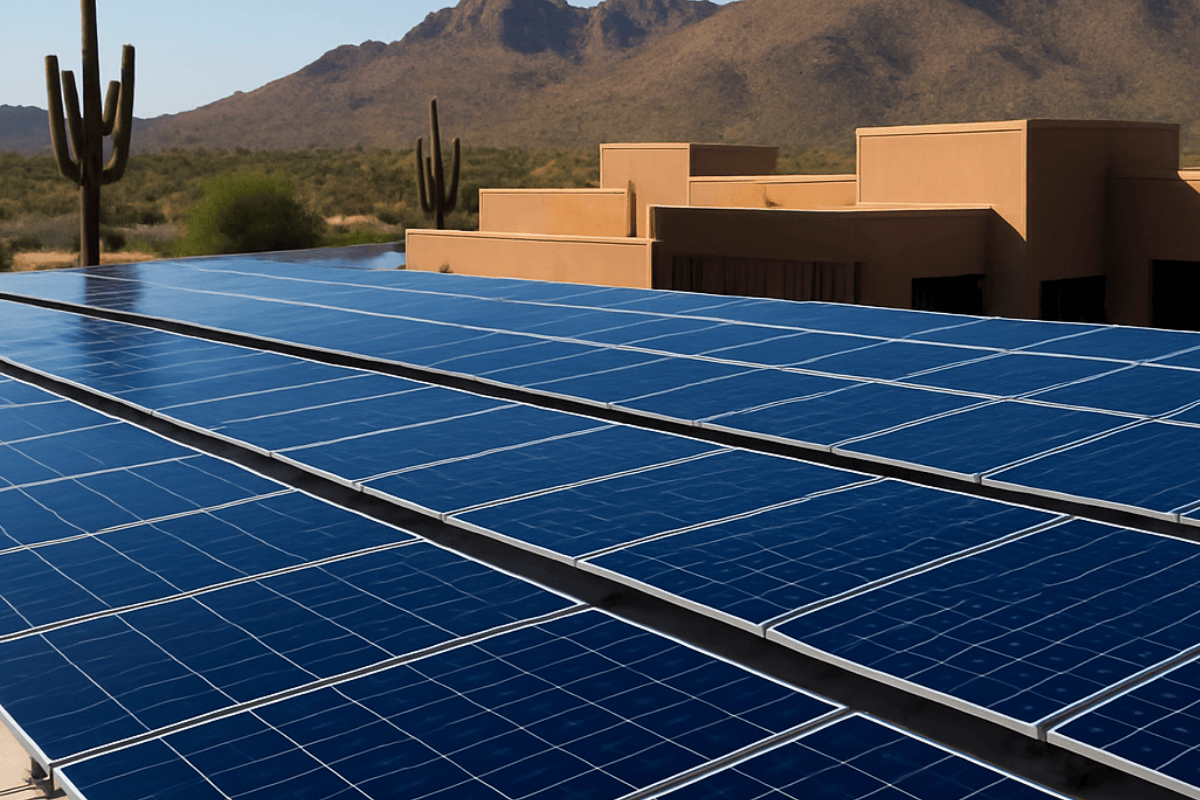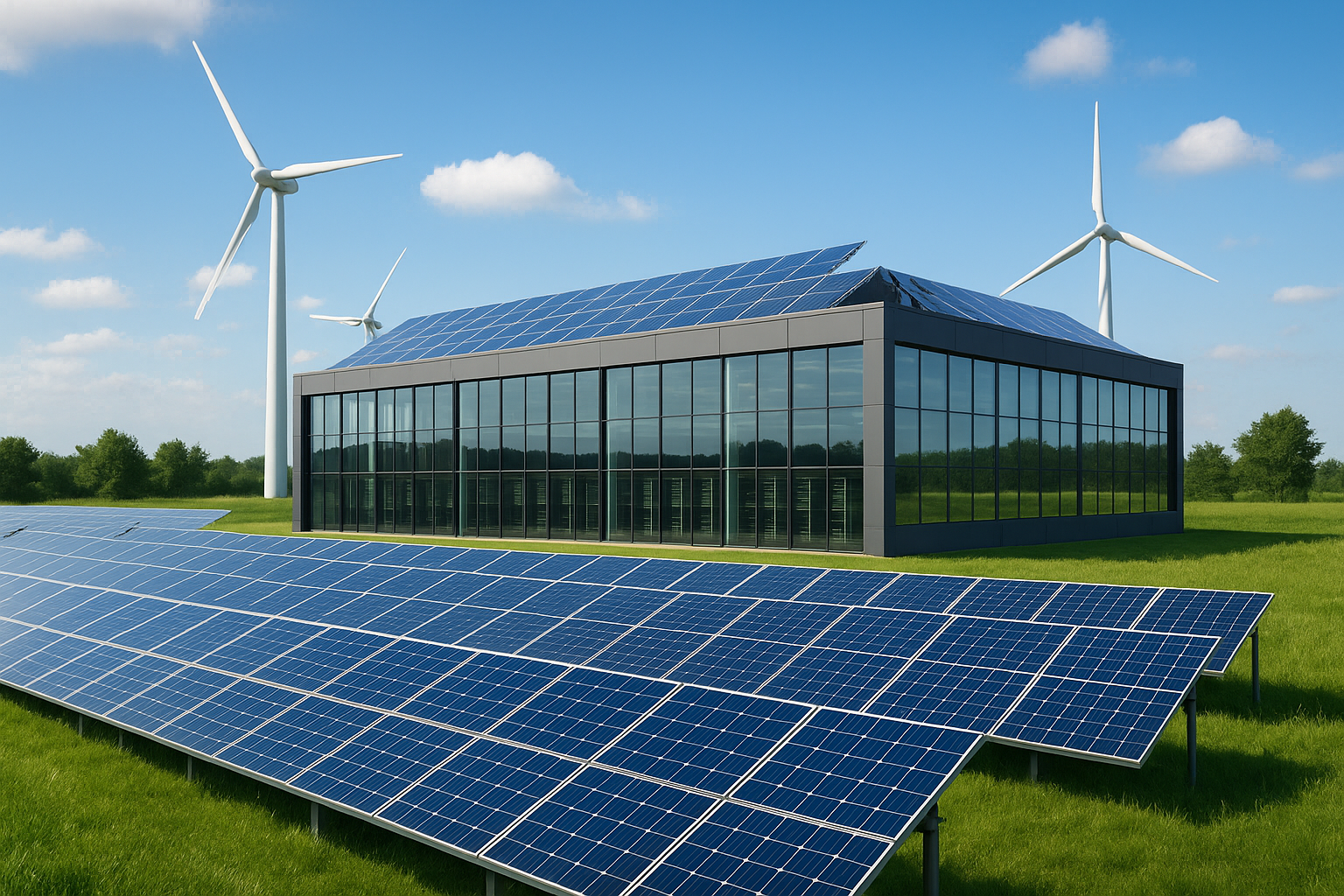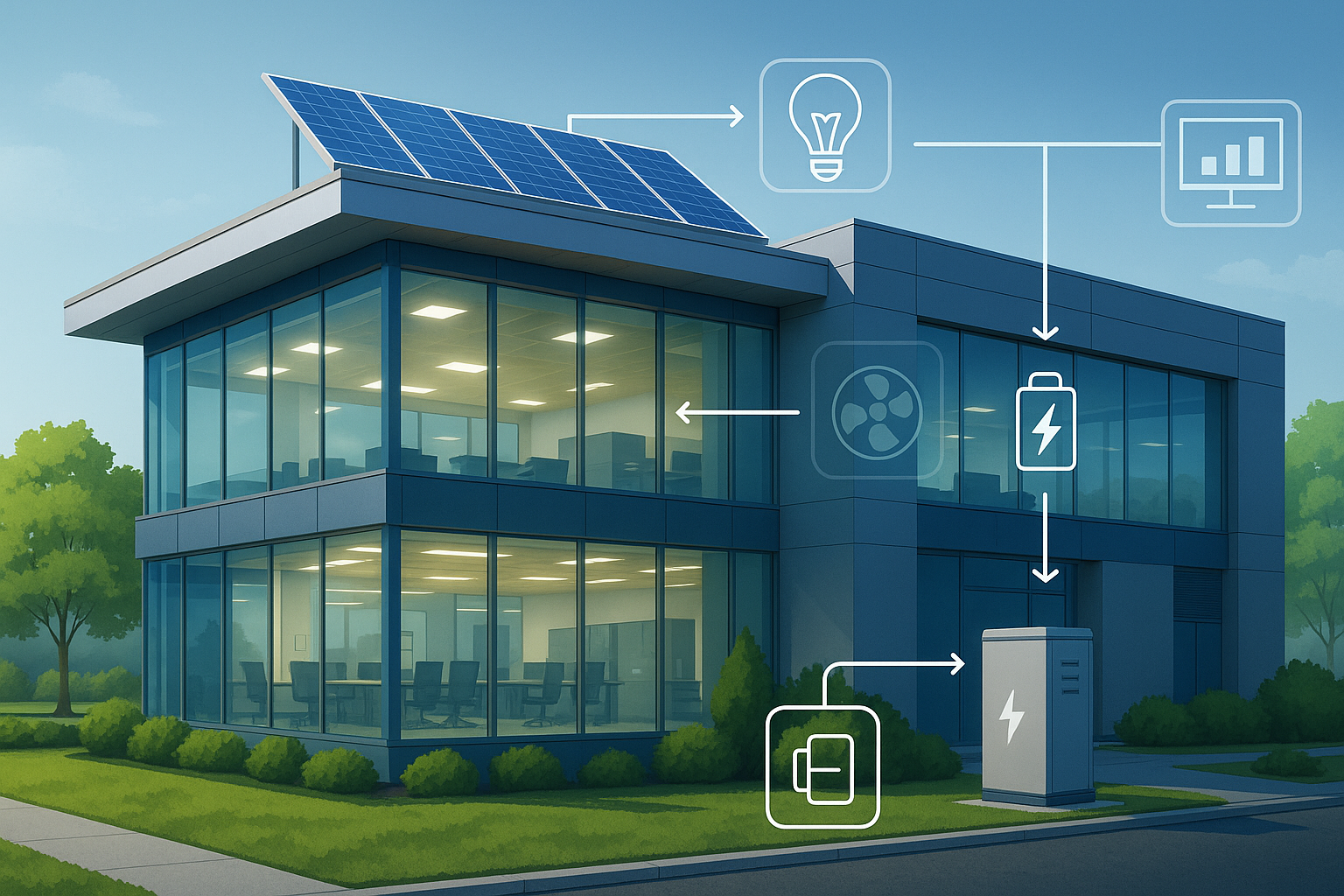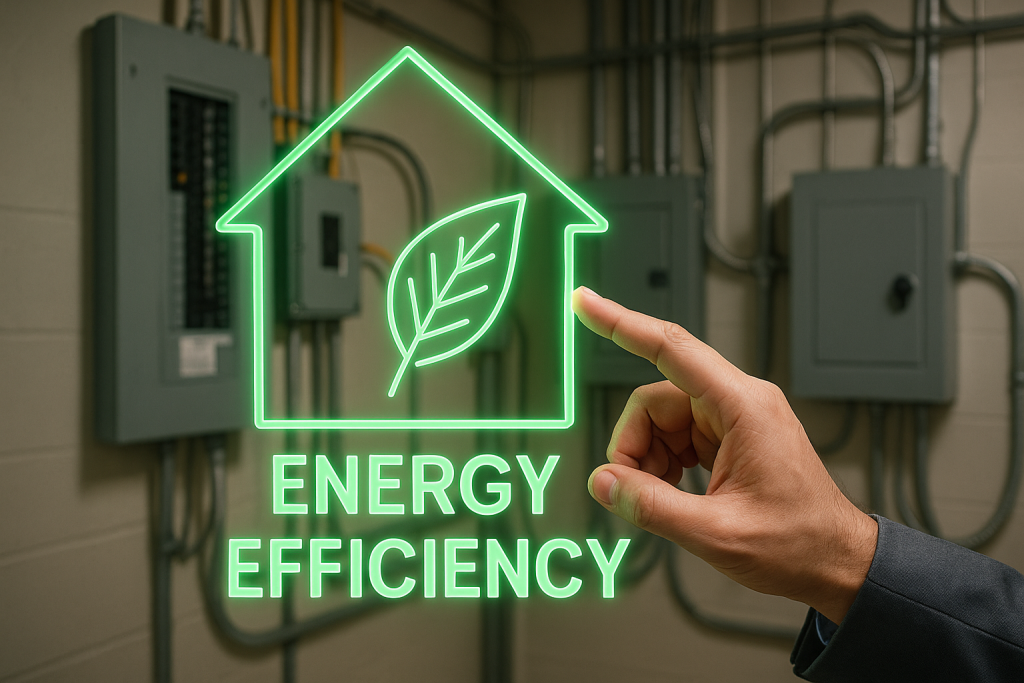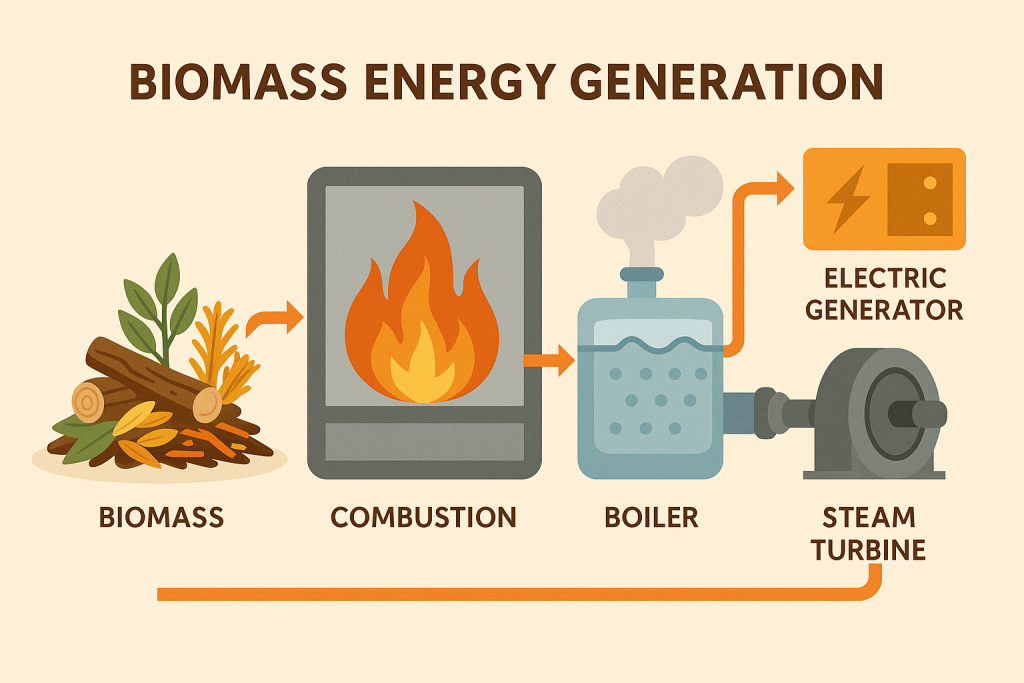Up to 30% of a commercial building’s energy loss happens through its windows, according to multiple studies. In regions with intense sunlight, this inefficiency can cause cooling costs to spike by as much as 50%.
For property owners and facility managers, this translates into higher utility bills and added strain on HVAC systems.
One practical and cost-effective way to combat this is through commercial window tinting, a solution that not only reduces operational expenses but also supports long-term sustainability goals.
This article explains why commercial window tinting is more than just a cosmetic upgrade. It’s a strategic investment that improves energy efficiency, lowers carbon emissions, and delivers real financial returns. By reducing the amount of solar heat entering a building, window films help maintain comfortable indoor temperatures, minimize air conditioning use, and extend the life of costly equipment.
Here’s what you’ll learn:
- The science behind how window tinting reduces heat gain in commercial spaces
- How much businesses can save on energy bills and HVAC costs
- The additional benefits of commercial window tinting, including UV protection and improved comfort
- How tinting supports environmental goals by cutting carbon emissions
- Available financial incentives, rebates, and the typical return on investment
By the end of this post, you’ll understand how commercial window tinting reduces cooling costs while enhancing comfort and helping your business meet energy-efficiency standards.
How Glass Windows Increase Energy Loss
Glass windows are one of the most significant sources of energy inefficiency in commercial buildings. While they allow natural light to enter, they also serve as a conduit for heat transfer, which can dramatically impact indoor comfort and energy bills.
Solar Heat Gain Through Glass
When sunlight hits untreated glass, a considerable portion of that energy passes through in the form of solar heat. This phenomenon, known as solar heat gain, causes indoor temperatures to rise quickly, especially in buildings with large glass facades. As indoor temperatures climb, the HVAC system must work harder to maintain a comfortable climate, leading to increased energy consumption and higher utility bills.
In sun-intense regions like Florida or Texas, unprotected windows can raise cooling costs by 35% to 50%. The more glass surface area a building has, the more pronounced the effect. Modern commercial architecture often includes large or floor-to-ceiling windows, which can exacerbate energy inefficiency if left untreated.
Year-Round Energy Loss
Energy inefficiency through windows isn’t limited to the summer months. In winter, the same untreated glass that allows heat in during the summer also allows indoor heat to escape. This dual function results in year-round energy loss. The HVAC system not only has to cool the building in summer but also heat it in winter, placing continuous strain on the system.
How Window Tinting Works
Commercial window tinting addresses this problem by applying a specially engineered film to a building’s windows. These films are designed to block solar heat and ultraviolet radiation while still allowing natural light to pass through.
Reflective and Absorptive Technologies
High-performance window films use a combination of reflective and absorptive technologies to reduce solar heat gain:
- Solar control films reflect a large portion of the sun’s infrared rays, which are the main source of heat.
- Low-E (low emissivity) films are designed to reflect indoor heat back into the building during winter while blocking outside heat during summer.
Some window films are capable of rejecting up to 83% of solar heat, significantly reducing the amount of heat that enters the building. These films also help maintain a more stable indoor temperature, which reduces the load on HVAC systems and improves overall energy efficiency.
UV and Glare Reduction
Commercial window films can filter out up to 99.9% of harmful ultraviolet (UV) rays. This helps protect interior furnishings, flooring, and merchandise from fading or deterioration. Glare from direct sunlight is also significantly reduced, which enhances comfort for employees and customers alike.
Quantified Energy and Cost Savings
The financial impact of commercial window tinting is both measurable and substantial. Businesses in warm climates typically experience the most dramatic improvements in energy efficiency and cost savings.
Cooling Cost Reductions
Studies show that installing window film can lead to a 30% or greater reduction in cooling energy use. In some cases, businesses have been able to reduce their air conditioning capacity by one ton for every 100 square feet of tinted glass. This translates into lower monthly energy bills and less strain on HVAC systems.
For example:
- Retail stores in Florida reported cooling cost reductions of over 25% after installing solar control films.
- Office buildings in Central California achieved up to 30% savings on summer energy bills.
Payback Period and ROI
The typical return on investment (ROI) for commercial window tinting is between 2 and 3 years. This period can be even shorter when businesses take advantage of available utility rebates and tax incentives. Some utility companies cover 50% to 75% of installation costs for qualifying films, making the upfront cost more manageable.
Benefits Beyond Energy Savings
HVAC Longevity and Maintenance
By decreasing the cooling load, window films help HVAC systems operate more efficiently. This leads to:
- Fewer maintenance issues
- Less frequent repairs
- Extended system lifespan
Lower HVAC usage also reduces wear and tear, which means fewer service calls and lower long-term maintenance costs.
Interior Protection
UV rays are a leading cause of fading in flooring, artwork, furniture, and merchandise. Blocking 99.9% of UV radiation, window films help preserve the appearance and durability of interior assets. This is particularly valuable for retail stores, museums, and offices with high-end furnishings.
Improved Comfort and Productivity
Unfiltered sunlight can cause glare on computer screens and uneven indoor temperatures. Window tinting helps:
- Minimize eye strain
- Maintain consistent indoor temperatures
- Reduce the need for blinds or curtains
A more comfortable work environment can lead to improved employee focus and productivity.
Environmental Impact
Emissions Reduction
Reducing the need for air conditioning translates directly into lower carbon dioxide (CO₂) emissions. Commercial buildings are responsible for a large share of urban energy use, and cooling systems are one of the biggest contributors to greenhouse gas emissions.
By cutting cooling demand, commercial window tinting helps businesses:
- Lower their carbon footprint
- Meet internal environmental targets
- Improve sustainability reporting for stakeholders
Grid Relief and Sustainability Goals
Lower energy consumption also reduces strain on local power grids. This is especially important during peak summer months when demand for electricity is highest. Businesses that reduce their energy use contribute to broader community efforts to conserve resources and stabilize energy supply.
Financial Incentives and Rebates
Utility Rebates
Several utility companies offer rebates that can cover a significant portion of the installation cost:
- Duke Energy and Orlando Utilities Commission (OUC) have programs that offer rebates of 50% to 75% for qualifying commercial films.
- These rebates often require professional installation and documentation of energy savings.
Tax Credits and Energy Programs
In some regions, commercial property owners may qualify for:
- Federal or state tax credits for energy-efficient upgrades
- Participation in local energy-efficiency programs that offer funding or low-interest financing
Legal and Regulatory Context
Local Ordinances and Carbon Caps
Cities like New York have enacted laws such as Local Law 97, which sets caps on carbon emissions for large buildings. Non-compliance can result in hefty fines. Upgrading to energy-efficient window films is one way to help meet these requirements.
Energy Performance Standards
Modern building codes are evolving to favor structures with higher energy performance ratings. Installing commercial window tinting can improve a building’s Energy Star score or LEED certification potential.
Types of Commercial Window Films
Low-E and Solar Control Films
- Low-E films: Designed to reflect indoor heat during winter and block outdoor heat during summer. Ideal for mixed climates where year-round efficiency is needed.
- Solar control films: Optimized for blocking infrared heat and UV rays. These are most effective in hot, sunny environments.
Ceramic and Metalized Films
- Ceramic films: Offer excellent heat rejection and UV protection without interfering with electronic signals. They are also less reflective, making them suitable for buildings where exterior appearance matters.
- Metalized films: Known for high heat and glare rejection, but may have a shinier appearance and can interfere with wireless or cellular signals.
Installation Process and Best Practices
Professional vs. DIY
Professional installation is strongly recommended for commercial applications:
- Certified installers ensure a bubble-free, long-lasting finish
- Professional work is often required to qualify for rebates and warranties
DIY kits may be tempting, but they typically lack the durability, energy savings, and warranty protections of professional-grade films.
What to Expect During Installation
A typical commercial installation involves:
- Initial consultation and energy audit
- Film selection based on building orientation and usage
- Installation during off-hours to minimize disruption
- Curing time of a few days, during which windows should not be cleaned
Real-World Business Results
Retail and Office Case Studies
- A retail store in Orlando installed solar control films and saw a 28% drop in summer cooling bills within the first year.
- An office building in Kansas reported fewer tenant complaints about glare and temperature fluctuations after tinting, improving tenant satisfaction and lease renewal rates.
Measurable ROI Examples
- A corporate headquarters in Southern California recouped its investment in under two years by reducing energy bills and HVAC repairs.
- A museum in Texas used UV-blocking films to preserve valuable exhibits while cutting down on climate control costs.
Smart, Sustainable, and Cost-Effective
Commercial window tinting reduces cooling costs, improves indoor comfort, and extends the life of HVAC systems. It also contributes to environmental goals by lowering energy consumption and carbon emissions. With fast ROI, available rebates, and multiple secondary benefits like UV protection and glare control, window tinting is a strategic investment for any business.
References
- How Commercial Window Tinting Can Conserve Energy and Cut Costs
- 8 Cost-Saving Benefits of Commercial Window Tint
- Benefits of Commercial Window Tinting for Businesses
- How Commercial Window Tinting Pays for Itself in Two Years
- How Window Tinting Can Save You Money on Energy Bills
- Top Trends in Commercial Window Tinting
- 7 Major Benefits of Commercial Window Tinting
- Commercial Window Tinting by Total Protection Films

